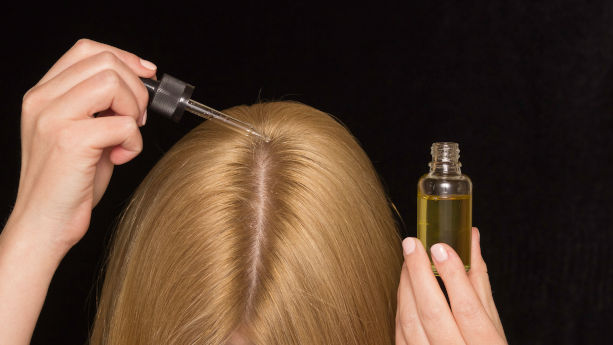
This guide covers requirements for hair care products, such as hair sprays and hair lotions. We primarily explain the Cosmetic Products Regulation regulates substances in hair care products. We also explain the relevance of other regulations such as REACH, and the POPs Regulation in the context of hair care products.
Methodology: We provide examples of hair care products mentioned in Annexes II to V of the Cosmetic Products Regulation. Additionally, we list examples of banned and restricted substances from the following sources:
a. Annex II to V of the Cosmetic Products Regulation (only substances for which hair care products are mentioned)
b. Commission Decision (EU) 2021/1870 establishing the EU Ecolabel criteria for cosmetic products and animal care products (only substances for which hair care products are mentioned)
c. REACH Regulation
Content Overview

FREE CONSULTATION CALL (US, EU & UK)
- Request a free 30-minute call with Ivan Malloci to learn how we can help you with:
- Find product requirements
- Certification and labeling
- Lab testing
Cosmetic Products Regulation
Examples of hair care products
The preamble to Annexes II to VI of the Cosmetic Products Regulation provides definitions for different types of cosmetics. It defines “hair product” as a cosmetic product that is meant for application on the hair on one’s head or face, except eyelashes.
Below we list examples of hair care products, that appear in Annexes III–V. Note that for some products (e.g., rinse-off products), similar definitions are provided:
- Hair dye products
- Hair waving or straightening products
- Hair lotions
- Hair rinse-off products
- Rinse-off hair products
- Hair leave-on products
- Hair products
- Hair sprays
- Hair aerosol spray products
Also, according to the European Commission, hair dye products are categorised into the following categories according to their colourfastness:
- Temporary hair dyes
- Semi-permanent hair dyes
- Permanent hair dyes
While the former two categories are non-oxidative hair dyes, the latter category consists of oxidative hair dyes that are shampoo-resistant.
Even though such a classification is provided, we couldn’t find any evidence that the requirements differ depending on the category.
Prohibited substances in hair care products
Annex II of the regulation lists substances prohibited from use in cosmetic products. This also includes substances that are specifically banned in hair dye products, such as the following:
- 6-Methoxy-2,3-Pyridinediamine and its HCl salt
- 2,3-Naphthalenediol
- 2,4-Diaminodiphenylamine
- 2,6-Bis(2-Hydroxyethoxy)-3,5-Pyridinediamine and its HCl salt
- 2-Methoxymethyl-p-Aminophenol and its HCl salt
Restricted substances in hair care products
Annex III of the regulation lists restricted substances used in hair care products. We list below a few examples of such restricted substances. Note that these are just some examples, as there may be more requirements for some substances.
| Substance | Product type / Body parts | Maximum concentration / Other restrictions | Warnings / Conditions of use |
|
Thioglycolic acid esters |
Hair waving or straightening products |
8% (general use) 11% (professional use) |
Conditions of use: May cause sensitization in the event of skin contact Warnings: Contains thioglycolate |
|
Oxalic acid, its esters and alkaline salts |
Hair products |
5% |
For professional use only |
|
Potassium or sodium hydroxide |
Hair straightener |
2% (general use) 4.5% (professional use) |
General use: Contains alkali Keep out of reach of children Professional use: For professional use only Both: Avoid contact with eyes Can cause blindness |
|
1,3-benzenediol |
Hair lotions and shampoos |
0.5% |
Contains resorcinol |
Allowed colorants in hair care products
Annex IV of the regulation lists colorant substances permitted in cosmetic substances. As this Annex does not mention any substances specific to hair care products, we list below a few examples of substances for which the body part is not specified.
| Substance | Product type / Body parts | Maximum concentration / Other restrictions | Warnings / Conditions of use |
|
1-[(2-Chloro-4-nitrophenyl)azo]-2-naphthol and its insoluble barium, strontium and zirconium lakes, salts and pigments |
Not specified |
3% |
N/A |
|
4-(Phenylazo)resorcinol |
Not specified |
N/A |
N/A |
|
N-(5-Chloro-2,4-dimethoxyphenyl)-4-[[5-[(diethylamino)sulphonyl]-2-methoxyphenyl]azo]-3-hydroxynaphthalene-2-carboxamide |
Not specified |
N/A |
N/A |
|
Disodium 2-amino-5-[(4-sulphonatophenyl)azo]benzenesulphonate |
Not specified |
N/A |
N/A |
Allowed preservatives in hair care products
Annex V of the regulation lists substances permitted for use in preservatives. We list below the only preservative we found that is relevant and specific to hair care products.
| Substance | Product type | Maximum concentration / Other restrictions | Warnings / Conditions of use |
|
1-(4-Chlorophenoxy)-1-(imidazol-1-yl)-3,3-dimethylbutan-2-one |
Hair lotions |
0.2% |
N/A |
Restrictions on CRM substances
Article 15 of the regulation bans the use of category 1A or 1B carcinogenic, mutagenic, and reprotoxic (CMR) substances in cosmetic products as listed in Annex VI Part 3 of the CLP Regulation . Here are a few examples of such substances:
- Cobalt nitrate
- Furfuryl alcohol
- 1-bromo-2-methylpropyl propionate
- Trisodium nitrilotriacetate
- Polyhexamethylene biguanide hydrochloride
Note that the above substances are not specific to hair care products.
Nanomaterials
Hair care products, such as shampoo, may contain nanomaterials. According to Article 16 of the Cosmetic Product Regulations, responsible persons must submit notifications regarding their cosmetic products if said product contains nanomaterials.
Other substances restrictions
Annex VI of the regulation sets restrictions for the use of UV filters in cosmetic products. However, we have no evidence that these are used in hair care products, as the Annex does not specify this.
Other requirements
Here is a list of other requirements that apply to all products covered by the Cosmetic Product Regulation, including hair care products:
- Safety assessment
- Notification
- Product claims
- Testing
- Product information files
- Cosmetic product safety report
- Labelling
Commission Decision (EU) 2021/1870 establishing the EU Ecolabel criteria for cosmetic products and animal care products
Commission Decision (EU) 2021/1870 restricts several substances that are relevant to hair care products. We list examples of such substances, as impurities in hair dyes, and their set limits expressed in parts per million (ppm):
- Barium <10 ppm
- Bismuth <10 ppm
- Cadmium <10 ppm
- Cobalt <10 ppm
- Chromium VI <10 ppm
- Lead <10 ppm
- Mercury <1 ppm
- Nickel <10 ppm
REACH
The REACH Regulation applies to mixtures and substances, including those that might be used in hair care products. Several hair care products, such as shampoo and conditioner, might contain restricted substances, such as phthalates.
The ECHA lists several restricted phthalates in Annex XVII to REACH. Here are some examples (and their restrictions):
- DIBP < 0.1%
- DBP < 0.1 %
- BBP < 0.1%
- DEHP < 0.1%
- DNOP < 0.1
- DINP < 0.1%
- DIDP < 0.1%
REACH also covers other substances that could be relevant for hair care products, for example microplastics, which are restricted to a maximum of 0.01% on several cosmetics products, including:
- Rinse-off products – from 17 October 2027
- Leave-on products – from 17 October 2029
The restriction on microplastics is set by Regulation (EU) 2023/2055, which amends Annex XVII to REACH.
POPs Regulation
The Persistent Organic Pollutants (POPs) Regulation restricts POPs such as PFCAs, PFOAs, and PFAS. A study carried out by Denmark’s Environmental Protection Agency found that products such as hair spray may contain one or more PFAS substances.
Note that it is possible that other substances restricted by this regulation may also be found in hair care products.
















 Create compliance checklists for your product (US, EU & UK)
Create compliance checklists for your product (US, EU & UK) 20+ product certificate templates
20+ product certificate templates Create label files
Create label files Book product testing
Book product testing